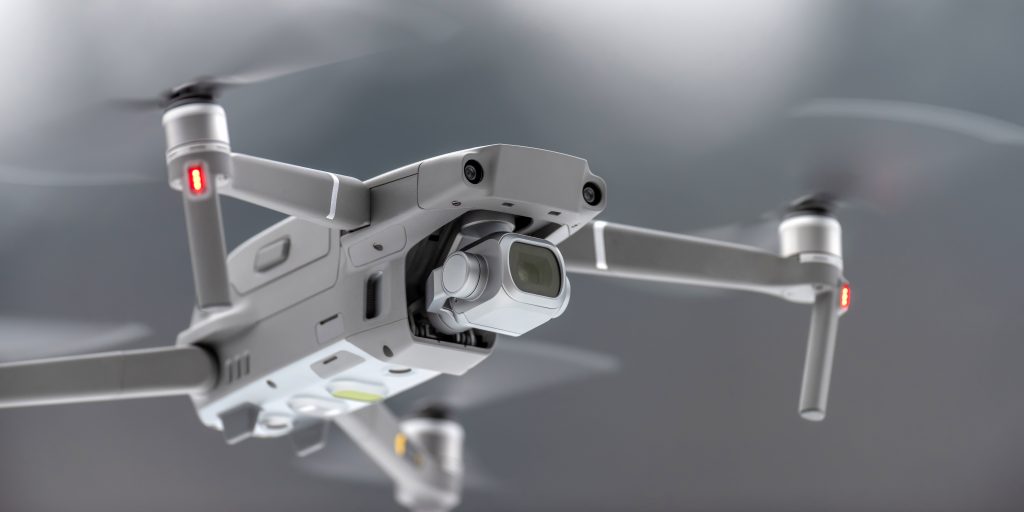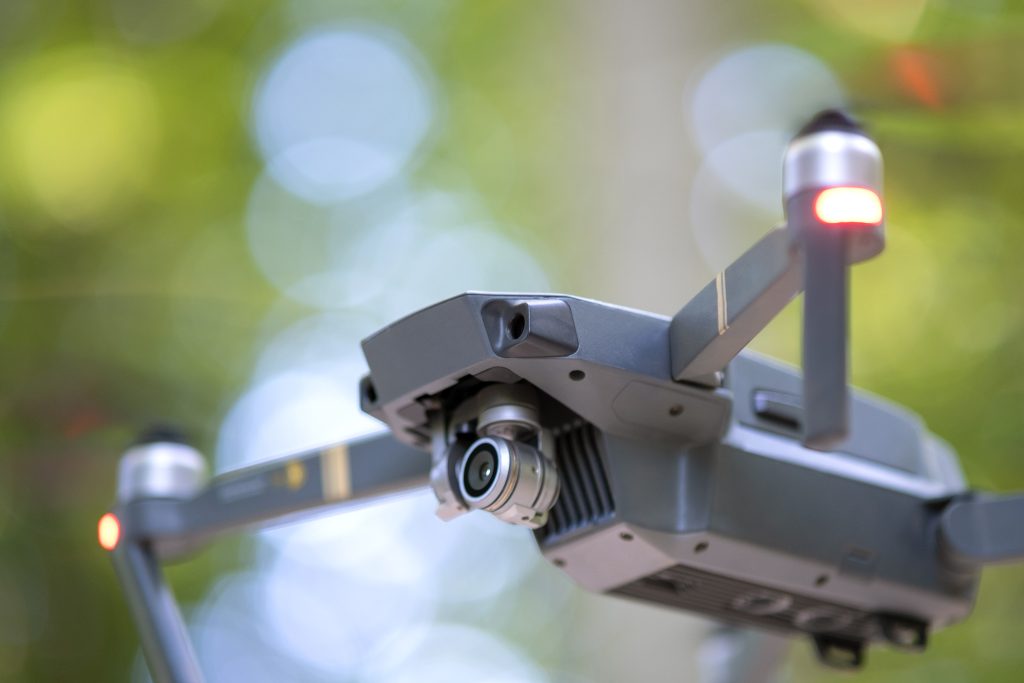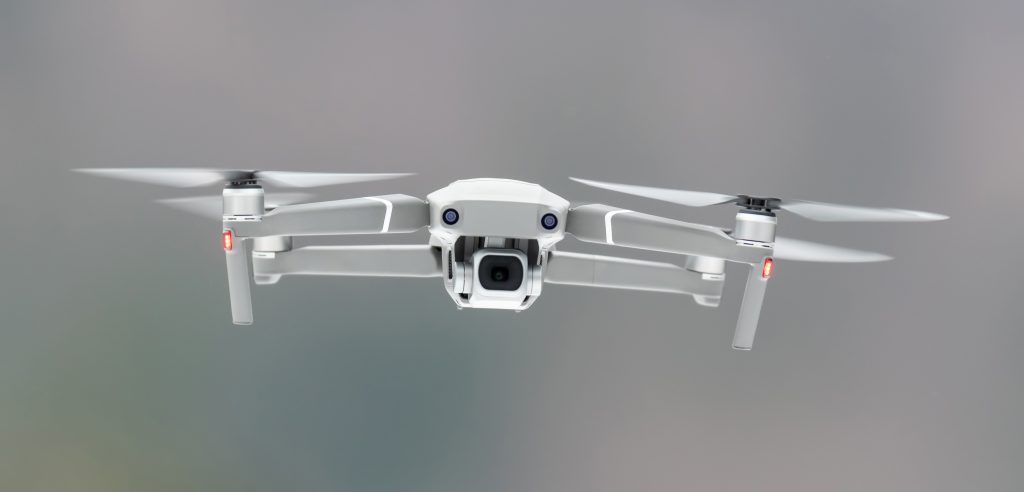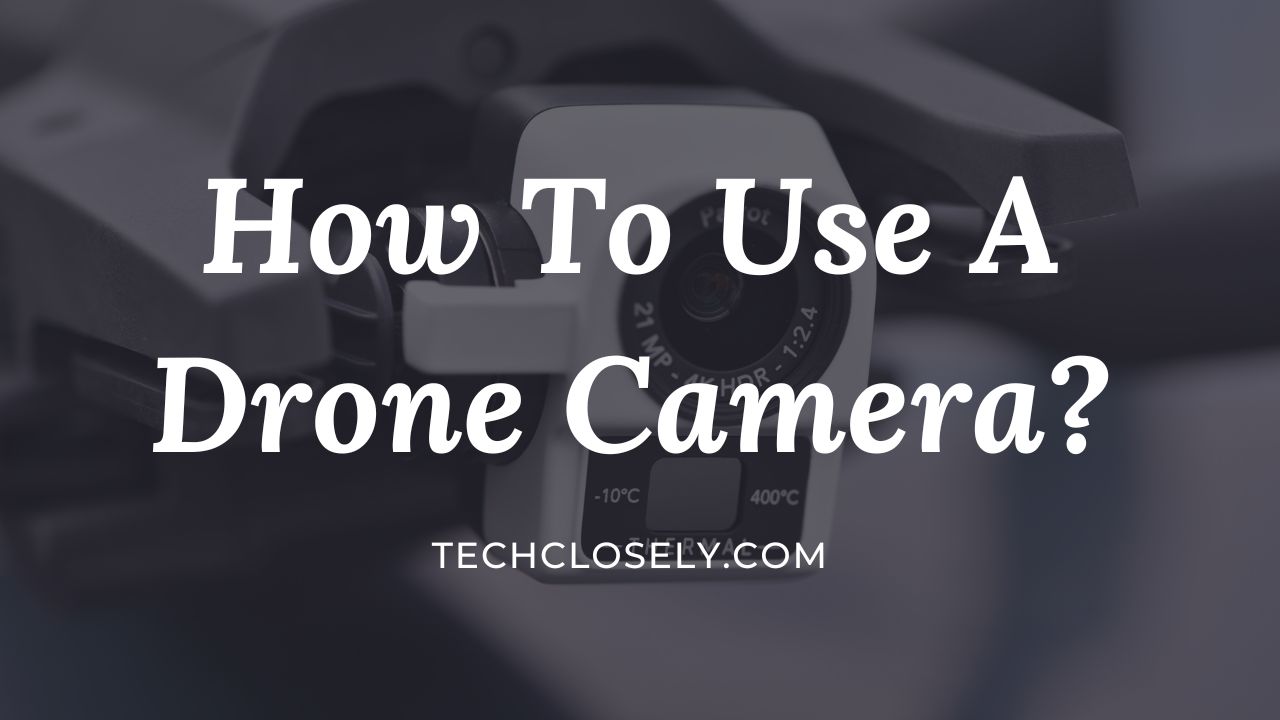In recent years, the world of photography has witnessed a remarkable evolution with the advent of drone cameras. These small, unmanned aerial vehicles equipped with high-quality cameras have opened up a whole new realm of possibilities for capturing breathtaking aerial shots and videos.
Operating a drone camera requires more than just enthusiasm. It requires a basic understanding of the controls, flight maneuvers, and camera settings to maximize your creativity and ensure safety.
In this blog, we will guide you through the process of using a drone camera and everything related to dorne camera. From choosing the right drone camera to mastering flight techniques and capturing stunning aerial shots, we will cover all the essential aspects of drone camera usage. Let’s get started:
What is a Drone Camera
A drone camera is a tool that allows you to capture stunning aerial photographs and videos. This remote-controlled device offers the unique ability to take pictures and record footage from the air.
While drone cameras are mostly utilized in professional settings like sports and real estate photography, they have also gained popularity among hobbyists seeking to explore unconventional perspectives.

In the realm of professional photography, drone cameras have become indispensable. They are frequently employed by sports photographers to capture dynamic shots from captivating angles.
From football games to car races and surfing competitions, these devices offer a bird’s-eye view that adds excitement and visual impact to the images.
Real estate photographers also rely on drone cameras to showcase properties from an elevated standpoint, providing potential buyers with a comprehensive understanding of the surrounding area and highlighting unique features.
In essence, A drone camera is a remote-controlled apparatus that opens up a world of possibilities for aerial photography and videography. While professionals rely on them for various applications, enthusiasts are captivated by the opportunity to capture images from extraordinary angles.
With a drone camera, you can explore uncharted visual territories, making photography an exciting and immersive experience.
How Does a Drone Camera Work?
The camera on a drone is designed to establish a seamless communication link with the controller on the ground. This feature enables the pilot to modify the camera settings without having to land the drone. It simplifies and improves the process of capturing aerial video and images.
To perceive the operation of both the drone and the camera, it is necessary to understand the fundamentals of drone operation. A handheld controller functions as the interface between the pilot and the drone when flying a drone.
Using either Wi-Fi signals or radio frequencies, the controller communicates with the drone. Toy drones typically employ Wi-Fi signals for communication, whereas sophisticated drones utilise radio frequencies for more reliable and extended-range communication.
Similar to how it relays instructions for flight direction and altitude, the controller transmits commands pertaining to the functionality of the drone camera. This includes altering camera settings such as focus, exposure, and other variables that affect the quality and composition of captured video or images.
To utilise a drone camera effectively, a combination of drone flying and photography abilities is required. The pilot must be able to operate this unmanned aerial vehicle with skill, preserving flight stability and control.
In addition, a solid comprehension of photography principles and techniques is necessary for composing visually appealing shots, optimising camera settings for different scenarios, and capturing captivating aerial images.
How to Control Drone Camera

Controlling a drone camera involves several important considerations and methods to ensure optimal performance and capture stunning aerial drone footage. Let’s explore in detail the various ways to control your drone camera.
Select the Right Antenna
The antenna is responsible for transmitting and receiving the video signal between the drone and your controller or FPV goggles. The type of antenna you choose will depend on your specific drone and use case.
For example, if you plan to engage in aerial photography or video production regularly, investing in an omnidirectional antenna is recommended. An omnidirectional antenna provides better signal reception and allows for clearer images.
On the other hand, if your drone is primarily used for racing or FPV flying, a single omnidirectional antenna may suffice. Consider the placement and design of the antenna based on your drone’s configuration to ensure optimal signal strength and coverage.
Connect all the Equipment
To control your drone camera, it’s crucial to ensure that all the necessary equipment is properly connected. This includes connecting the camera to the video transmitter (VTX) and securely attaching it to your drone.
Additionally, connect the video transmitter to a power source, such as a drone battery or dedicated power supply. This will provide the necessary power for the video transmission.
Ensure all connections are secure, and follow the manufacturer’s instructions for proper wiring and setup.
Adjust Camera Settings via OSD
Many FPV cameras feature an On-Screen Display (OSD) menu, which allows you to adjust camera settings directly on the camera feed.
OSD provides control over parameters such as exposure, white balance, color profiles, and camera tilt. It also allows you to display additional information on the screen, such as telemetry data (flight time, speed, and altitude) or GPS coordinates.
To access and adjust the camera settings via OSD, you can use either a remote controller (RC) or FPV goggles with built-in controls. This allows you to fine-tune the camera settings while keeping an eye on the live feed, ensuring the best possible image quality for your aerial shots.
Set Up the Video Transmitter
The video transmitter (VTX) is responsible for transmitting the FPV video signal from the drone to your controller or FPV goggles. To set up the video transmitter effectively, follow these steps:
Frequency, Channel, and Band: Set the frequency, channel, and band on your VTX according to the regulations in your country or region. Ensure you operate within the legal limits and avoid interfering with other wireless signals.
Antenna Positioning: Properly position the antenna to ensure optimal signal reception and minimize signal interference. Avoid placing the antenna near metallic objects or other components that could obstruct the signal. Experiment with different antenna orientations to find the best configuration for your specific setup.
Power Range: Adjust the power output of the video transmitter based on your desired flying distance and drone flight conditions. Higher power output allows for a longer range but can also consume more battery power. Find a balance that suits your needs while considering the local regulations.
Types of Cameras Used in Drones
Drones are equipped with various types of cameras depending on the intended use, budget, and specific requirements.
Leading drone manufacturers like DJI, Yuneec, and Autel have introduced cameras with impressive capabilities. Many of these cameras have the ability to shoot in 4K resolution, delivering stunningly detailed footage. Autel Robotics takes it a step further by offering drones capable of achieving up to 8K resolution, pushing the boundaries of image quality.

Another exciting feature present in these advanced drone cameras is the ability to zoom. This functionality allows users to capture shots from considerable heights without compromising image quality.
DJI’s Zenmuse series, for instance, offers zooming capabilities, with their latest models achieving an incredible zoom of up to 180X. Such powerful zooming capability proves invaluable when capturing shots of construction projects, electrical stations, or turbines from a safe distance.
The continuous improvements in drone camera technology have opened up a world of creative possibilities for photographers and videographers. Below are the different types of cameras used in drones:
Built-in Integrated Cameras
Most consumer drones come with built-in integrated cameras. These cameras are specifically designed and optimized for use with the drone model. They are lightweight, compact, and seamlessly integrated into the drone’s body.
Built-in cameras often provide good image quality and stability, making them suitable for hobbyists, aerial photography, and aerial videography enthusiasts.
Action Cameras
Action cameras, such as the popular GoPro series, are commonly used as camera modules for drones. These cameras are known for their ruggedness, high-resolution capabilities, and wide-angle lenses. They can capture stunning footage in various conditions, including sports and action scenarios.
Action cameras are often compatible with specific drone models through specialized mounting systems.
Mirrorless Cameras
Mirrorless cameras are lightweight and offer interchangeable lenses, making them a versatile option for professional drone photography and videography.
With advanced features, larger sensors, and higher resolution, mirrorless cameras can deliver exceptional image quality and dynamic range. They offer more manual control over settings, enabling photographers to capture precise shots and take advantage of different lens options.
DSLR Cameras
Some high-end professional drones are capable of carrying DSLR (Digital Single-Lens Reflex) cameras. DSLR cameras are known for their exceptional image quality, versatility, and advanced features. They provide full manual control over settings, interchangeable lenses, and large sensors for superior low-light performance and dynamic range. DSLR cameras integrated into drones allow photographers to achieve professional-grade results and capture stunning aerial photographs.
Thermal Imaging Cameras
Thermal imaging cameras are used in drones for applications such as search and rescue, surveillance, and inspection. These cameras detect heat signatures emitted by objects and provide valuable information about temperature variations.
Thermal cameras are beneficial in scenarios where visibility may be limited, such as in darkness or through smoke. They are widely used in industries such as firefighting, law enforcement, and infrastructure inspection.
Lidar Cameras
Lidar (Light Detection and Ranging) cameras are a specialized type of camera used in drones for mapping, surveying, and 3D modeling. They emit laser pulses and measure the time it takes for the pulses to return after bouncing off objects. This data is used to create detailed 3D maps or models.
Lidar cameras are valuable in applications such as land surveying, urban planning, and environmental monitoring.
These are just a few examples of the types of cameras used in drones. The camera selection depends on the specific requirements of the drone’s purpose, whether it’s recreational, professional photography, videography, thermal imaging, or mapping. When choosing a drone, it’s important to consider the camera type and its capabilities to ensure it aligns with your intended use and desired image quality.
Uses of Drone Camera
The uses of drone cameras have expanded significantly in recent years, offering a wide range of applications across various industries.
Let’s explore some of the key uses of drone cameras and how they are transforming various fields:
Aerial Photography and Videography
One of the most popular uses of drone cameras is capturing breathtaking aerial photographs and videos.
Drones equipped with high-resolution cameras and stabilization systems enable photographers and videographers to capture stunning images from unique perspectives.
Whether it’s capturing landscapes, events, real estate properties, or outdoor adventures, drone cameras provide a versatile tool for creating captivating visual content.
Cinematography and Filmmaking
In the film and entertainment industry, drone cameras have revolutionized cinematography. They offer dynamic aerial shots and tracking shots that were previously challenging to achieve.
Filmmakers can now capture sweeping panoramic views, chase scenes, and immersive aerial sequences with ease.
The ability to smoothly maneuver in the air and capture shots from different angles adds a new dimension to storytelling and visual aesthetics in movies, documentaries, and commercials.
Real Estate and Property Inspection
Drone cameras have become invaluable in the real estate industry. They provide a cost-effective and efficient way to showcase properties from aerial perspectives.
Real estate agents can capture high-quality photos and videos, highlighting the property’s features, surroundings, and proximity to amenities. Aerial footage helps potential buyers or renters gain a better understanding of the property’s size, layout, and neighborhood, enhancing the decision-making process.
Moreover, drone cameras are also used for property inspections. They can assess roofs, facades, and other inaccessible areas without the need for expensive equipment or risking human safety.
The ability to capture high-resolution images and videos enables inspectors to detect potential issues such as damage or structural problems more accurately.
Construction and Infrastructure Monitoring
In the construction industry, drone cameras have transformed the way projects are monitored and documented. Drones equipped with cameras and sensors can provide real-time aerial views of construction sites, offering project managers and stakeholders valuable insights. They can monitor progress, identify potential issues, and ensure compliance with design specifications.
Drone cameras can also create time-lapse videos, showcasing the entire construction process from start to finish.
Environmental Monitoring and Conservation
Drone cameras play a crucial role in environmental monitoring and conservation efforts. They can survey vast areas of land, forests, or wildlife habitats, providing valuable data on biodiversity, deforestation, or ecosystem health.
Drone cameras enable researchers and conservationists to monitor wildlife populations, track migration patterns, and identify potential threats.
Search and Rescue Operations
In emergency situations, drone cameras can be deployed for search and rescue operations. Equipped with thermal imaging cameras, they can detect heat signatures and locate missing persons in remote or hazardous environments.
Drone cameras provide a faster and safer way to cover large areas and assist rescue teams in identifying individuals in need of help.
Agricultural Applications
Drone cameras are increasingly used in agriculture to improve crop management and monitoring. They can capture high-resolution imagery of fields, helping farmers identify areas that require attention, such as irrigation issues, pest infestations, or nutrient deficiencies. This data assists in making precise decisions regarding fertilization, water management, and crop health, ultimately optimizing yields and reducing environmental impact.
Research
Drone cameras have become instrumental in various research fields, providing scientists with new perspectives and data collection capabilities. They can be used for environmental research, including monitoring biodiversity, tracking wildlife populations, and studying ecosystems.
Drones equipped with specialized sensors and cameras can collect data on air quality, water quality, and pollution levels. This information aids researchers in understanding and mitigating environmental challenges.
Archaeological research benefits from drone cameras as well. Drones can survey large areas quickly, helping archaeologists identify potential excavation sites or mapping ancient structures. The aerial perspective allows for better visualization and analysis of historical landscapes.
Weather Forecasting
Drone cameras contribute to weather forecasting by collecting valuable data for meteorological studies. They can be equipped with sensors to measure temperature, humidity, wind speed, and atmospheric pressure at various altitudes.
Drone cameras can gather data in real-time, providing more accurate and localized weather information. This data assists meteorologists in improving weather models, tracking storms, and enhancing early warning systems for severe weather events. Drones also enable researchers to study atmospheric phenomena, such as cloud formation or microclimates, with detailed visual documentation.
These are just a few examples of the diverse uses of drone cameras across various industries. As technology continues to advance and regulations evolve, we can expect even more innovative applications for drone cameras in the future.
From artistic expression to practical solutions, drone cameras have proven to be invaluable tools, pushing the boundaries of visual storytelling, data collection, and problem-solving.
Choosing the Right Drone Camera
Budget
Determine your budget for the drone camera, considering both the initial cost and potential additional expenses such as lenses, filters, and accessories.
Different camera types come at varying price points, so it’s essential to set a realistic budget that aligns with your requirements and skill level.
Purpose
Clarify the purpose for which you will be using the drone camera. Are you capturing aerial photography, shooting videos, or both?
Consider the specific needs of your intended use, such as image quality, stabilization capabilities, and resolution requirements. Different camera types excel in different areas, so choose one that suits your purpose best.
Skill Level
Assess your skill level in photography or videography. If you are a beginner or have limited experience, a built-in integrated camera or an action camera can be a good starting point. These options offer ease of use and may have automated features to assist you.
For more experienced users seeking greater control and flexibility, mirrorless or DSLR cameras can provide advanced features and manual settings.
Camera Specifications
Pay attention to camera specifications such as resolution, sensor size, dynamic range, and low-light performance. Higher resolutions and larger sensors generally result in better image quality.
Consider the camera’s capabilities in terms of frames per second (fps) for video recording, image stabilization, and the availability of manual controls for exposure, focus, and white balance.
Compatibility
Ensure the camera you choose is compatible with the drone model you own or plan to purchase. Different drones have different mounting systems and weight capacities, so check the specifications and compatibility requirements before making a decision.
By considering these factors, you can narrow down your options and make an informed choice when selecting a drone camera. Remember to also read user reviews, seek expert advice, and explore sample footage or images captured with the camera you are considering.
Choosing the right drone camera will enhance your aerial photography or videography experience and enable you to capture stunning visuals from the sky.
Conclusion
In conclusion, the use of drone cameras has revolutionized the world of photography and videography, providing unprecedented opportunities to capture stunning aerial shots and videos.
Drone cameras have become indispensable tools for creative expression, data collection, and problem-solving. They offer a unique perspective that was previously inaccessible, allowing us to see the world from a new angle. With advancements in technology and evolving regulations, the potential applications of drone cameras continue to expand.
Whether you’re a professional or a hobbyist, mastering the art of using a drone camera requires a combination of drone flying skills, photography/videography knowledge, and creative vision.
By adhering to safety guidelines, practicing responsible drone operation, and exploring the vast capabilities of your drone camera, you can unlock a world of creativity and capture stunning aerial imagery that will leave a lasting impact.

